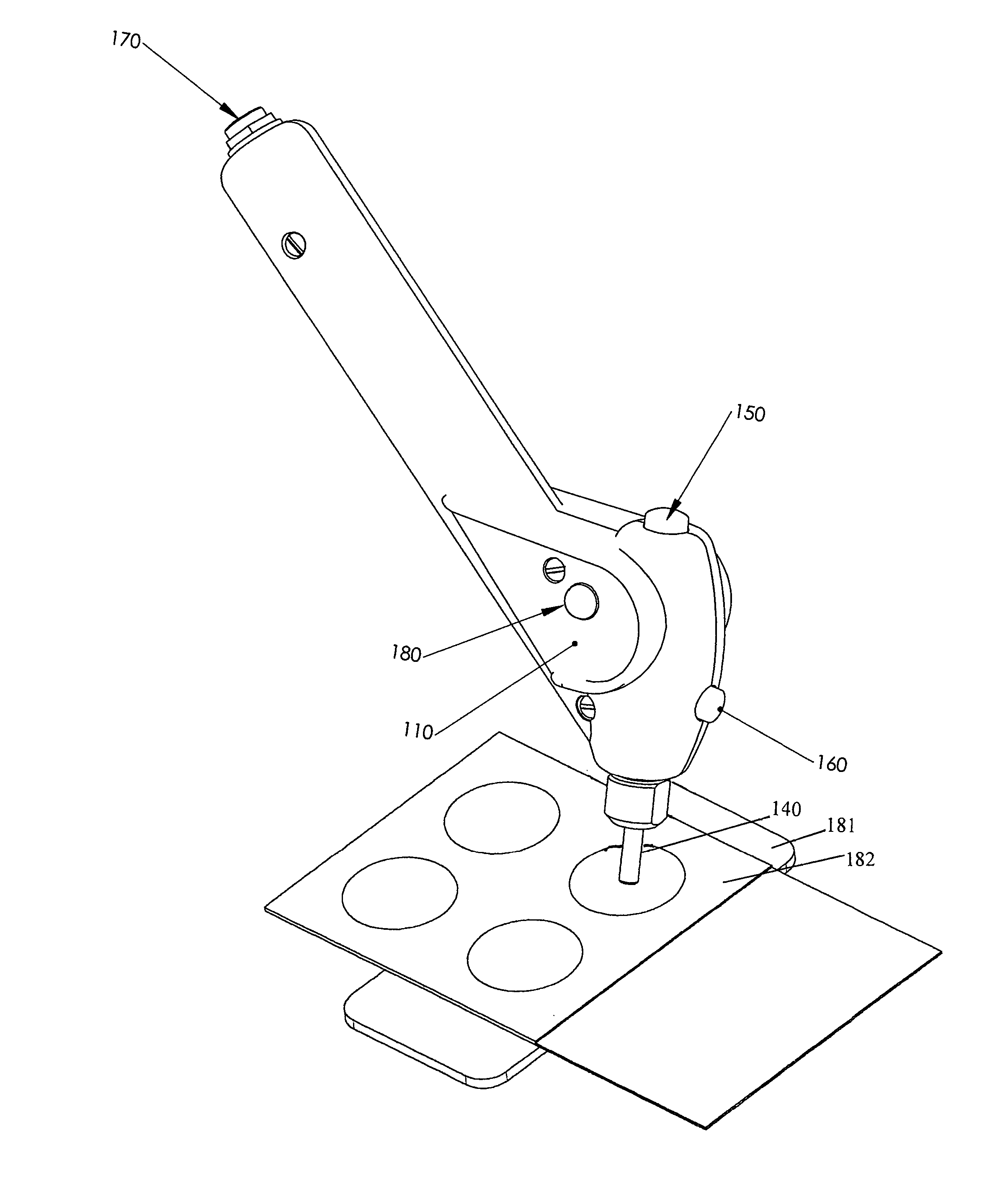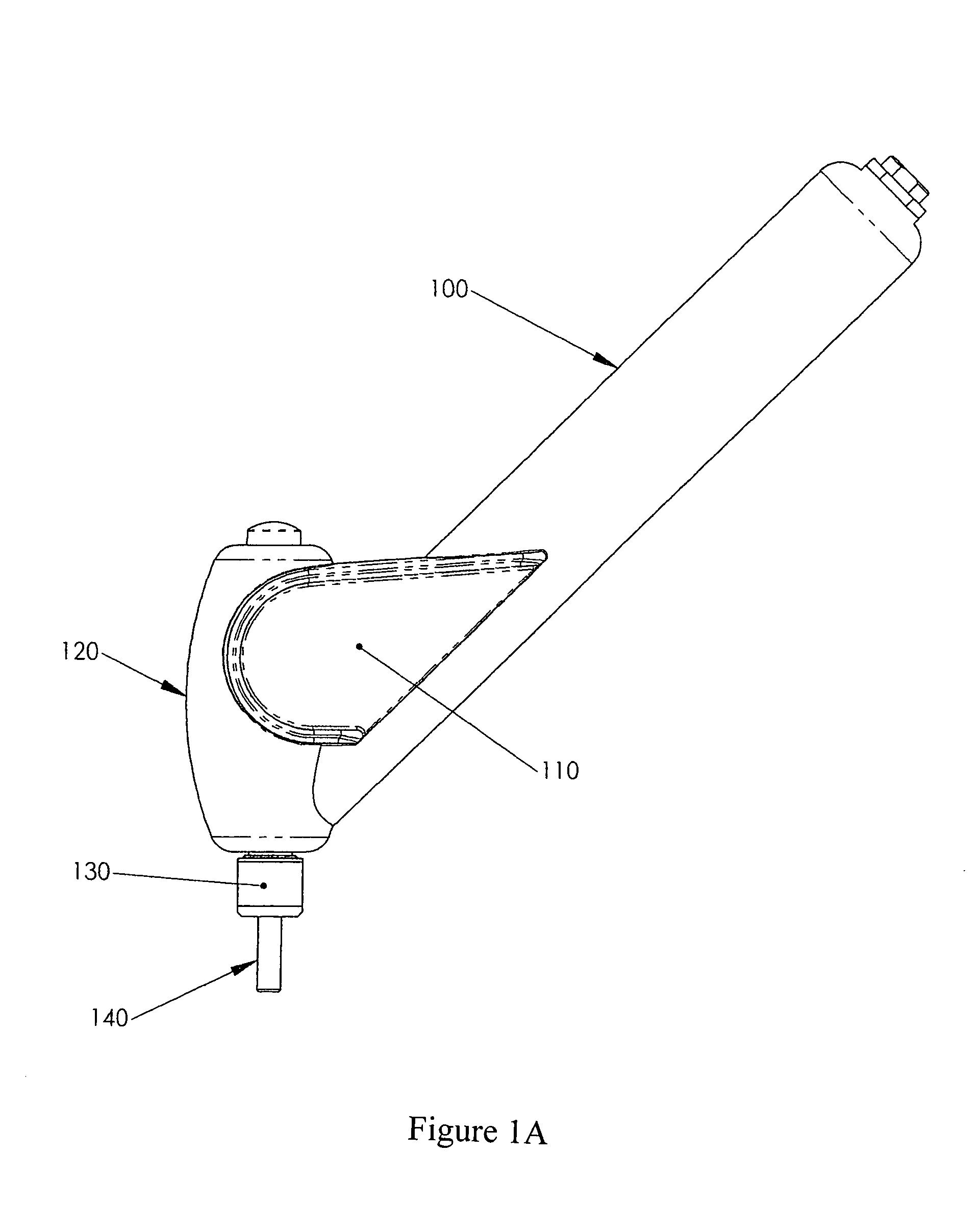Motor driven sampling apparatus for material collection
a sampling apparatus and motor drive technology, applied in the direction of sampling, instruments, measurement devices, etc., can solve the problems of increasing fatigue, affecting the quality of blood samples, and the ability to extract dried blood samples from blood cards, etc., to eliminate hand stress, eliminate manual exertion, and be safe and clean
- Summary
- Abstract
- Description
- Claims
- Application Information
AI Technical Summary
Benefits of technology
Problems solved by technology
Method used
Image
Examples
Embodiment Construction
[0081] Referring to FIG. 1A, a preferred embodiment of a sample collection device constructed in accordance with the principles of the invention is shown. A tubular handle part 100 blends to a vertical boss part 120 as a clamshell casing. A collet nut 130 at the lower end of the boss holds the tubular cutting sleeve 140. To facilitate ease of holding the unit, finger and thumb gripping rest ledger locations 110 are provided on each side of the casing. The exterior surface of the gripping locations may include a plurality of ridges to provide a better gripping surface for the user. FIG. 1B repeats the preferred embodiments described for FIG. 1A but also shows the clamshell casing with the button control 160 for the spindle lock mechanism on the front of the vertical boss part 120.
[0082]FIG. 2A shows a perspective view of the apparatus. At the upper end of the tubular casing a socket 170 is fitted for electrical supply to the internal drive motor. A push button 150 located at the top...
PUM
| Property | Measurement | Unit |
|---|---|---|
| diameters | aaaaa | aaaaa |
| angle | aaaaa | aaaaa |
| diameter | aaaaa | aaaaa |
Abstract
Description
Claims
Application Information
 Login to View More
Login to View More - R&D
- Intellectual Property
- Life Sciences
- Materials
- Tech Scout
- Unparalleled Data Quality
- Higher Quality Content
- 60% Fewer Hallucinations
Browse by: Latest US Patents, China's latest patents, Technical Efficacy Thesaurus, Application Domain, Technology Topic, Popular Technical Reports.
© 2025 PatSnap. All rights reserved.Legal|Privacy policy|Modern Slavery Act Transparency Statement|Sitemap|About US| Contact US: help@patsnap.com



